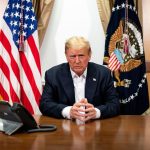In the complex game of international trade, tariffs have become the recent star player—or perhaps the villain, depending on whom you ask. President Trump announced significant new tariffs on goods from Canada, Mexico, and China on February 1, 2025, stirring quite the storm. And like all good storms, it has left us with plenty of drama and chaos to discuss. Canada and Mexico, usually our amiable neighbors, have decided to play hardball, matching the U.S. tariffs dollar for dollar. They tell us they are not angry, just really, really disappointed—which we all know is far worse.
So, what’s the grand plan here? The president insists this is part of a massive strategy to curb illegal immigration and the influx of drugs. The logic is that aggressive tariffs will shift production back to the U.S., making it unaffordable for companies to rely on imports. Oh, and let’s not forget the lesson on paying a lot less for pharmaceuticals. Presumably, all this will lead to a spectacular economic golden age. Yes, some folks might lose a little—perhaps a few jobs here, a couple of bucks there—but come on, can’t they just take one for the team?
Amidst this ambitious, albeit hazy, economic strategy, it seems the biggest fans of the tariffs might just be the lobbyists. Every major player, from shoe manufacturers to car builders, is lining up for exemptions like folks at the DMV waiting for their number to be called. This boom in lobbying could inadvertently breed a new age of some good old-fashioned wheeling and dealing—or as some economists might call it, corruption. Who could have guessed that a maze of tariffs might not be the simplest path to economic prosperity?
If your head is spinning, you’re not alone. Economists and business leaders are scrambling to make sense of it all. Many American companies that rely heavily on imports may face restructuring their entire business models. The way things are going, CEOs are probably as comfortable as a cat in a swimming pool. With supply chains hanging in the balance, even minor components that travel back and forth across borders are under scrutiny. It’s a brand-new ballgame, and everyone is trying to figure out the rules while the game’s already in play.
At the end of the day, markets are like fussy toddlers; they despise uncertainty and chaos. This unsettling situation has already caused wild swings in market trends. If there’s one thing everyone can agree on, it’s that when it comes to predicting the future of these tariffs and their aftermath, anyone’s guess is as good as a politician’s promise. As nations wait for the dust to settle, it’s a classic case of wait and see, with fingers crossed and hopes that somewhere amid the chaos lies an unexpected but welcome economic surprise.




